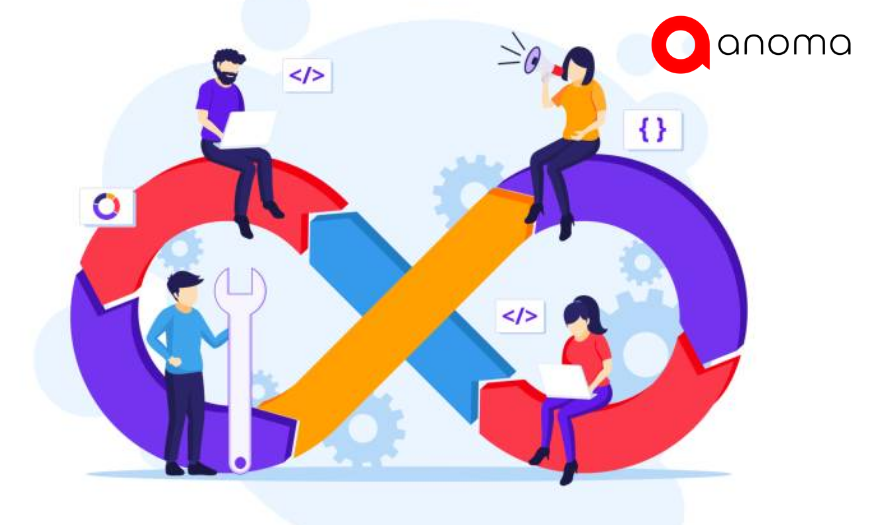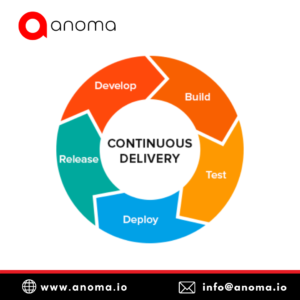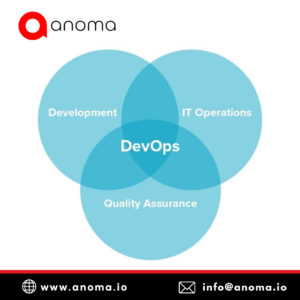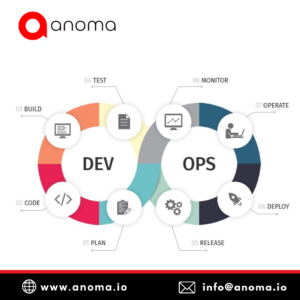Anoma team is been providing services to many industries with critical infrastructure and DevOps services.
Anoma believes that “ Agile and DevOps are for harnessing Integration, Interaction and Innovation ”
DevOps is a way of working that involves people, technologies, and processes in order to meet, if not exceed, customer expectations. Teams in the DevOps lifecycle are focused on delivering value in a safe, quick, and repeatable manner, aided by best practices in Continuous Integration and Continuous Delivery (CI/CD).
This process benefits enterprise cross-functional teams by automating, governing, and securing the entire software delivery process.
DevOps CI/CD best practices make the process of developing, testing, and releasing software more efficient and timelier. DevOps CI/CD services entail delivering and receiving timely feedback on the most recent changes, so it pays to analyze your feedback data to fine-tune your process.

Anoma’s DevOps services and integrations with cutting edge tools will create a robust maintence to our clinets infatructure needs. Here are the top five DevOps Integrations you can invest in to help your business grow.
Before implementing continuous integration, you must first ensure that your source code, configuration files, scripts, libraries, and executables are all in source control. Because contributors share small updates frequently, continuous integration makes integrating changes from various contributors simple.
Each one initiates a series of automated tests to provide immediate feedback on the change. As a result, committing on a regular basis facilitates collaboration and reduces merge conflicts when integrating more complex changes. Working together to break tasks down into smaller, discrete chunks can make this practice easier to adopt.

When the CI/CD pipeline provides developers with rapid feedback on changes, it prevents building on a faulty foundation and keeps the code in a constantly releasable state. It is a more efficient way to address issues immediately, allowing for a quick rollout of a fix.
If a build fails, the team’s first priority should be to get it back up and running. It would be beneficial if the team worked collaboratively to address a failing build and understand the root causes of failure. When there is a lot of pressure among the developers, the DevOps culture comes in handy
Each stage does not necessitate a new build. Rebuilding the software for different environments can result in inconsistencies, casting doubt on previously run tests. Instead, it is preferable to promote the same build artifact through each stage of the CI/CD pipeline. As a result, the design must be environment-agnostic. Variables, configuration files, authentication parameters, configuration files, or scripts must be called by the deployment script rather than being included in the build.
The same build can be deployed to each environment for testing. It instills trust in the team members in each artifact.

Despite the fact that CI/CD relies on automated testing, you must ensure testing for all scenarios. The goal of the DevOps CI/CD pipeline is to provide rapid feedback and deliver high-quality software to users as quickly as possible. As a result, it is critical to strike a balance between test coverage and performance. You can start with the shortest tests and get feedback as quickly as possible before moving on to longer tests.
The first layer of automated unit tests can provide broad coverage and alert you to any obvious flaws introduced by the most recent change. Once the unit tests are finished, you can add automated integration or component tests to test the interactions between different parts of the code.
After each deployment, it is always best to clean up the pre-production environments. When environments are left running for an extended period of time, it becomes difficult to keep track of all the changes and updates made to each environment.
The environments may also diverge from the original setup and from each other over time, which means that the test results may not be consistent.
Static environments can slow down testing, push back release dates, and increase maintenance costs. Using containers to host environments with an infrastructure-as-code approach, on the other hand, can ensure consistency and allow you to scale environments more easily to test multiple builds concurrently.

DevOps Tools and Platforms
The goal of implementing best practices of any kind is to achieve the enterprise’s goals as efficiently and effectively as possible. The same is true for creating new products or providing customers with DevOps CI/CD services. Enterprises that have implemented CI/CD best practices have more significant results that are perfectly aligned with the organization’s business goals.
As a result, it is preferable to seize every opportunity to strengthen and expand your CI/CD practices, thereby creating a virtuous circle of continuous improvement.
Anoma Technologies provides integrated DevOps Services using cutting-edge tools, technologies, and processes.
For custom queries please contact us here
